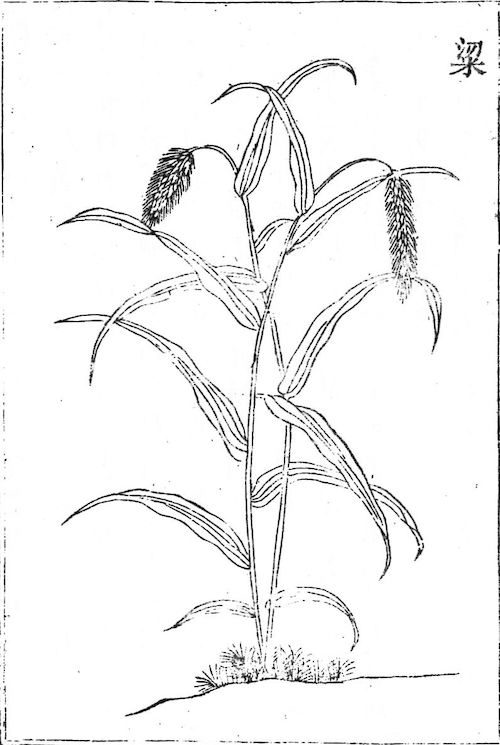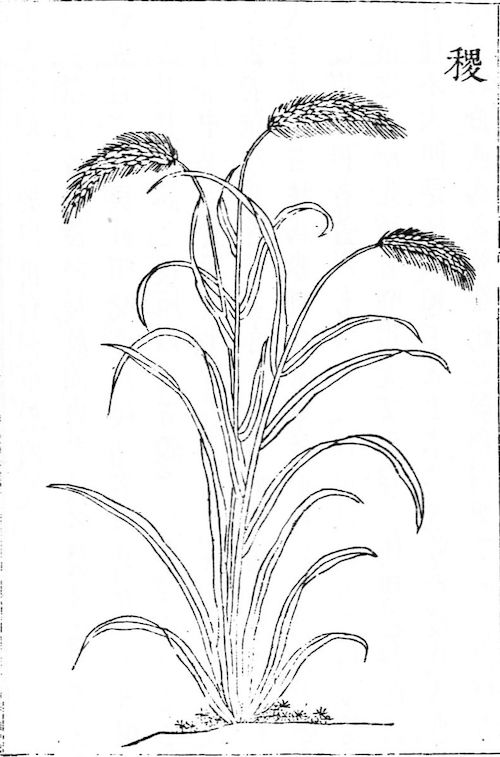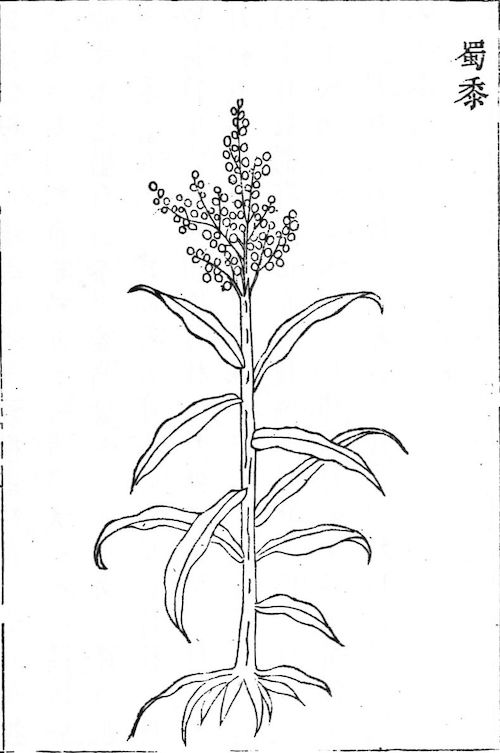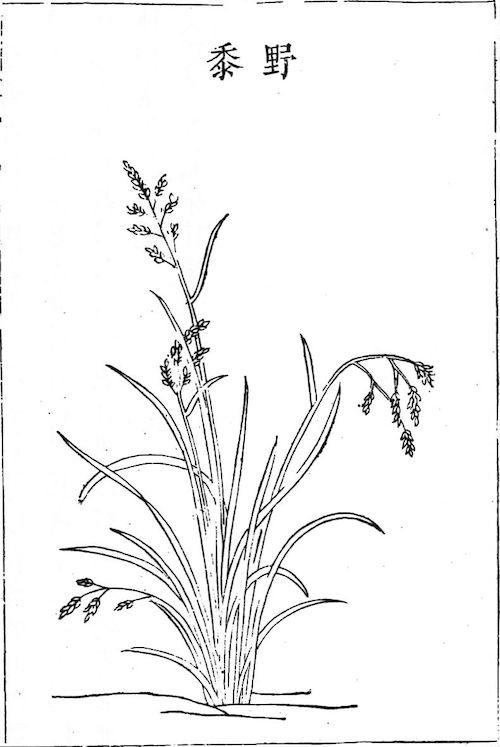Shoushi tongkao 授時通考 "Comprehensive treatises to instruct (the people) during all seasons" is a comprehensive agricultural treatise compiled on imperial order during the Qianlong reign-period 乾隆 (1736-1795) of the Qing era 清 (1644-1911). The compilation extended over a period of five years (finished in 1742) and was supervised by the Grand Ministers Ortai (E'ertai 鄂爾泰, 1677-1745) and Zhang Tingyu 張廷玉 (1672-1755).
The aim of the book was to regularise basic methods of agriculture to ensure a higher productivity throughout the empire. The 78-juan-long book has eight parts (men 門 "disciplines").
The recommendations of the Shoushi tongkao are most suitable for large tracts of land, and less for small farmers. This corresponds to the aim to raise the production of such field crops that contributed to a higher output of grain and raw material for textile products. The largest part of the book is dedicated to the production, storage and processing of the staple food rice. The seventh chapter then describes the cultivation of vegetables and fruits as well as the economical use of various trees. The last chapter explains the production of textile fibres like cotton, hemp and banana (Musa textilis), and the use of trees for the production of silk (mulberry leaves) and tung oil.
 |
Shoushi zhi tu 授時之圖, a kind of farming compass. The inner circles are a kind of calendar indicating the solar terms (jieqi 節氣), enriched by information on the seasonal phaenology, and (on the outer circle) farming activities. These are as detailed as periods of five days (hou 候) and fifteen days (qi 氣). 1742 moveable-type print edition from the Hall of Military Glory (Wuyingdian juzhen ben 武英殿聚珍本). |
The text is enriched with numerous illustrations and drawings that are in their greatest part taken from the Nongzheng quanshu 農政全書 by Xu Guangqi 徐光啟 (1562-1633) and Weng Zheng's 王禎 (1271-1333) Nongshu 農書. Although the general arrangement of the Shoushi tongkao follows older texts, there are also some differences to be seen, like the inclusion of the chapter on irrigation into the part on land management, while the topic of "hydromethods of the West" (Taixi shuifa 泰西水法) is appended to the chapter Gongzuo 功作. The categorization of agrarian tools shows a more coherent system than in older books. The chapter Quanke 勸課 with a length of 12 juan is a central text on agricultural politics and the status of agriculture in state philosophy and religion. It includes the brief famous text (Yuzhi) Gengzhitu (御製)耕織圖.
 |
 |
Left: foxtail millet (liang 粱 Setaria italica), right: the type ji 稷. It can be seen that ji is basically the same as liang, even if some books identify it as proso or broomcorn millet (Panicum miliaceum). There were obviously regional differences in the use of the word and changes over time (Wei & Liu 1991). |
|
 |
 |
Left: Sichuan broomcorn millet (Shushu 蜀黍, Sorghum bicolor), right: wild broomcorn millet or cupgrass (yeshu 野黍, Eriochloa villosa). |
|
Although the Shoushi tongkao does not provide new materials it can be seen as the last great traditional text on agriculture. It quotes extensively from older texts on agriculture (553 sources) and so served as a general reference book for many aspects of traditional agriculture.
As an official compilation it is included in the imperial series Siku quanshu 四庫全書 and its excerpt Chizaotang siku quanshu huiyao 摛藻堂四庫全書薈要. In 1956 the Zhonghua Shuju Press 中華書局 published a modern edition in two volumes.
| 1.-6. 天時門 Tianshi Agricultural activities during the four seasons | ||
|---|---|---|
| 1-2 | 總論 | General treatise |
| 3 | 春 | Spring |
| 4 | 夏 | Summer |
| 5 | 秋 | Autumn |
| 6 | 冬 | Winter |
| 7.-18. 土宜門 Tuyi Treatment of the soil | ||
| 7 | 彙考 | Collected analysis |
| 8 | 方輿圖說 | Illustrations and explanations to the regions |
| 9 | 辨方 | Methods of soil qualification |
| 10 | 物土 | Products of the soil |
| 11-12 | 田制 | Field allotment systems |
| 13-14 | 田制圖說 | Illustrations and explanations to the field system |
| 15-18 | 水利 | Hydraulic works |
| 19.-30. 穀種門 Guzhong Crops | ||
| 19 | 彙考 | Collected analysis |
| 嘉禾瑞穀瑞麥 | Miracles of various grains | |
| 20-22 | 稻 | Rice |
| 23 | 粱稷 | Panicled millet |
| 24 | 黍 | Glutinous millet |
| 25 | 粟 | Foxtail millet |
| 26 | 麥 | Wheat |
| 27-29 | 豆 | Pulse varieties |
| 30 | 麻 | Hemp varieties |
| 31.-41. 功作門 Gongzuo Production, processing and storage | ||
| 31 | 彙考 | Collected analysis |
| 32 | 墾耕 | Cultivation and ploughing |
| 33 | 耙勞 | Weeding |
| 34 | 播種 | Sowing |
| 35 | 淤蔭 | Fertilisation |
| 36 | 耘耔 | Fieldwork during the growth period |
| 37 | 灌溉 | Irrigation |
| 38 | 泰西水法 | Taixi shuifa Hydrological methods of the west |
| 39 | 收穫 | Harvest |
| 40 | 攻治 | Treatment of problems |
| 41 | 牧師(附) | app. Herding |
| 42.-53. 勸課門 Quanke Official regulations and taxation | ||
| 42 | 彙考 | Collected analysis |
| 43 | 詔令 | Imperial edicts |
| 44 | 章奏 | Memorials to the throne |
| 45 | 官司 | Official institutions |
| 46 | 祈報 | Harvest reports to the spirits |
| 47-48 | 敕諭 | Imperial decrees |
| 49 | 祈穀 | Prayers for grain |
| 耕耤 | The imperial ploughing ceremony | |
| 50-51 | 御製詩文 | Yuzhi shiwen Poems and literary prose written by emperors |
| 52-53 | 耕織圖 | Gengzhitu Images of tilling and weaving |
| 54.-57. 蓄聚門 Chuju Preparations to encounter famine | ||
| 54 | 彙考 | Collected analysis |
| 55 | 常平倉 | Ever-normal granaries |
| 56 | 社倉 | Community granaries |
| 義倉 | Charity granaries | |
| 57 | 圖式 | Commented illustrations |
| 58.-71. 農餘門 Nongyu Non-industrial agriculture (fruits, vegetables, trees, economically useful products) | ||
| 58 | 彙考 | Collected analysis |
| 59-62 | 蔬 | Vegetables |
| 63-66 | 果 | Fruits |
| 67-68 | 木 | Trees |
| 69 | 雜植 | Various trees |
| 70-71 | 畜牧 | Domestic animals |
| 72.-78. 蠶餘門 Canyu Silk and other products for textiles | ||
| 72 | 彙考 | Collected analysis |
| 制居 | Arrangement of implements | |
| 浴種 | Watering silkworm eggs | |
| 73 | 飼養 | Feeding of silkworms |
| 74 | 分箔 | Separation by mats |
| 入簇 | Bringing in bell-shaped spinning frames | |
| 擇繭 | Selection cocoons during the damping process | |
| 75 | 繰絲 | Boiling and reeling |
| 織染 | Weaving and dyeing | |
| 76 | 桑政 | State-management of mulberry trees |
| 77-78 | 桑餘 | Other information on mulberry |